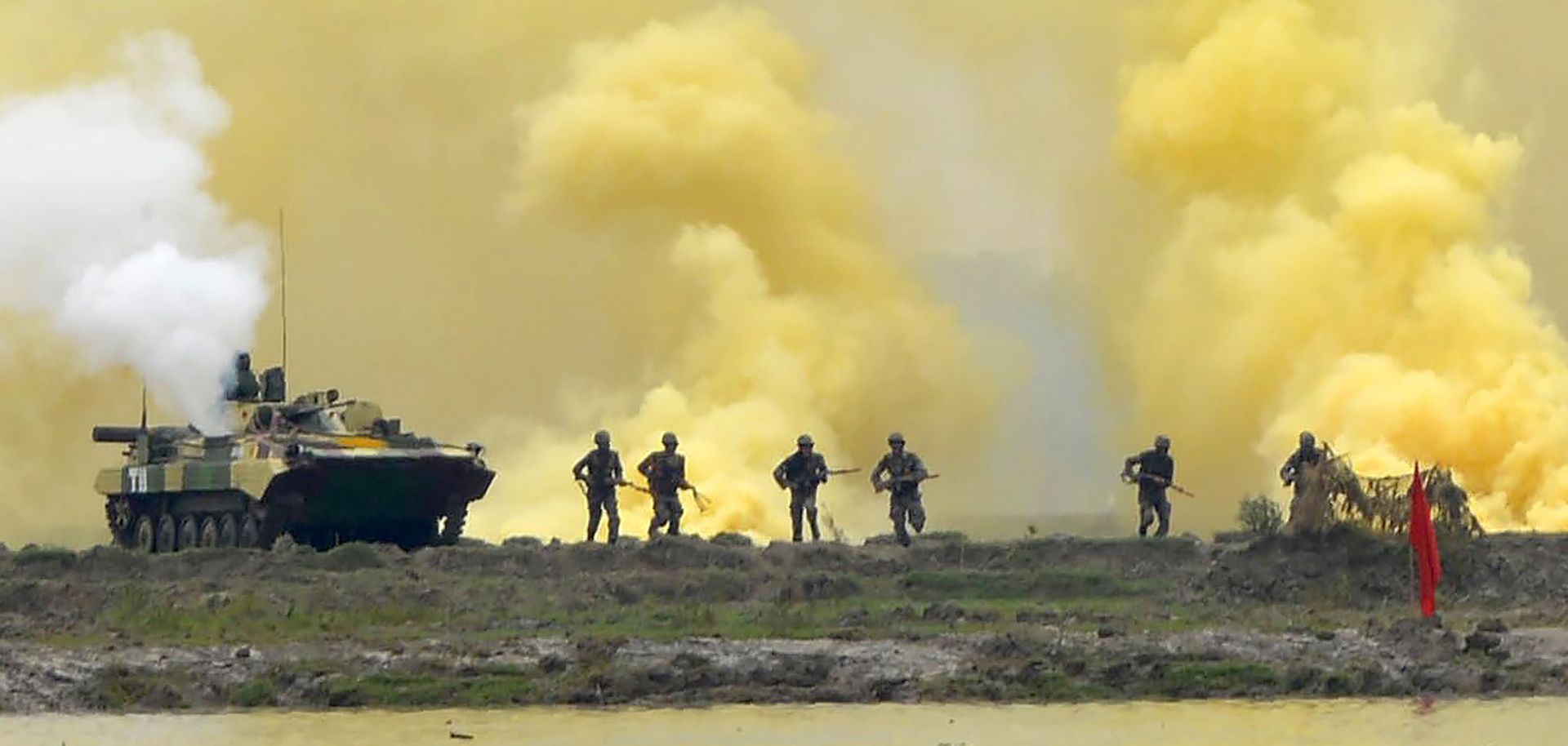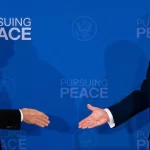
India’s Defence Industrial Mindset needs a Rethink - From Catching Up to Getting Ahead
November 25, 2025

Blog

Is India prepared to Institutionalise Cold Strike before the next Sindoor 2.0 or Galwan 2.0?
Posted by admin
By: Lt Gen A B Shivane, PVSM, AVSM, VSM (Retd)
“Cold Strike is not just a doctrine; it is India’s sharpened sword of calibrated multidomain deterrence, fusing speed, precision, and narrative dominance to seize the initiative, strike pre-emptively, and control escalation across all domains without flinching to nuclear blackmail.”
India’s national security posture is orienting towards doctrinal clarity, operational readiness, and technological embedding. But the shift, while visible in form and sentiment, still awaits full institutional codification. The Cold Strike doctrine, no longer a theoretical proposition, is taking shape through India’s real-time capabilities, emerging structures like Rudra, Bhairav, and Divyastra, and the demonstrative success of Operation Sindoor. The question that must be confronted is pressing and plain: is India prepared to institutionalise Cold Strike before the next SINDOOR 2.0 OR GALWAN 2.0 arrives?
For decades, Indian deterrence was rooted in a mix of declaratory restraint, reactive deployment, and ambiguous intent. The Cold Start Doctrine emerged in response to sub-conventional aggression but remained a paper deterrent. Its limitations were structural and political. It was afflicted by a slow mobilisation tempo and a lack of integration that did not distinguish between strategic orientation and capability building due to a civil-military disconnect. The difference with Operation Sindoor is not that India demonstrated a capability in nuclear escalation, but that India can now choose how it wants to escalate rather than its ability to absorb escalation. A transition in warfighting and statecraft.
Operation Sindoor showcased a shift from reaction to initiative. It demonstrated that India could destroy terrorist infrastructure, sever the networks of the enemies, and control the escalation ladder, without having to fight a contact battle. The operation was also a turning point, but, more than that, it confirmed a different paradigm. Cold Strike is not an iteration of Cold Start. It is a replacement – an anticipatory doctrine anchored in pre-emption, multi-domain orchestration, and cognitive dominance.
Cold Strike aims to dominate both the physical and psychological terrain of warfare.
But a doctrine, however sound, is only as credible as its institutional foundation. At present, Cold Strike exists more in application than in articulation. It is visible in the formation of Rudra Integrated Battle Groups, the special forces structure, and Divyastra long-range precision units. It is reflected in operational tempo and layered escalation cycles. Yet, without formal codification, India risks allowing this decisive shift to remain improvisational rather than structural.
The argument for codification is both strategic and urgent. The first reason lies in capability development. India’s modernisation plans, from the Integrated Capability Development Plan to procurement roadmaps, require doctrinal clarity to avoid disjointed acquisition and planning. It requires not only budgetary reforms, acquisition restructuring, budgetary envelop, but also the right balancing of manned unmanned team -MUM T and kinetic versus non kinetic capabilities. Without a declared Cold Strike doctrine, there is a danger that legacy mindsets will continue to shape future investments. A doctrine-driven approach would allow resources to be channelled towards technologies and structures that align with pre-emption, precision and jointness.
The second reason is deterrence credibility. A formalised doctrine sends a calibrated but unmistakable message to adversaries. It informs them that India does not merely have the will but also the means to respond across domains, in compressed timelines, with strategic restraint and operational decisiveness. Such clarity helps prevent miscalculation and raises the costs of proxy adventurism.
Third, the codification of Cold Strike is essential to drive institutional reforms. Integrated battle groups, cyber and space commands, cognitive warfare directorates and a unified national digital war grid cannot exist in silos. They need to be part of a coherent doctrinal ecosystem, powered by command autonomy, intelligence fusion and unified escalation frameworks. The establishment of a National War Cabinet, as a crisis-response entity within the national security architecture, must complement these military reorganisations.
The Cold Strike model envisions operations that begin with information dominance. Disrupting adversarial command structures and digital systems even before the first missile is fired. Non-kinetic domains such as cyber warfare, electronic disruption, and perception shaping precede kinetic strikes. Once escalated, C5ISR and precision vector assaults by Bhairav and Divyastra formations deliver calibrated punishment without triggering full-scale war. If necessary, Rudra formations execute contact operations. These formations are pre-configured for high-mobility, high-intensity warfare under nuclear thresholds. It is a model built for speed, precision, and controlled escalation.
Yet, operational readiness must be matched by cultural transformation. Doctrine is not merely a set of strategic instructions. It is a mindset. Indian commanders and planners must be oriented towards initiative-based, tempo-driven warfare. The ethos must shift from positional attrition to dislocating the adversary across all dimensions. This demands not only new structures but new attitudes. It requires mission command leadership, inter-service integration, and real-time decision cycles.
Importantly, Cold Strike is not just a military doctrine. It is a national posture. It requires political leadership to outline red lines, escalation ladders and pre-emption thresholds. It needs public understanding and strategic communication to prepare the national psyche for narrative battles in the cognitive domain. And it must be rooted in sovereign technological capabilities. These include homegrown platforms, interoperable systems and autonomous assets that ensure strategic independence in the hour of crisis.
India also needs to leverage Cold Strike diplomatically. A declared doctrine allows India to pre-position its narrative globally. It enables the pursuit of counter-terrorism diplomacy with a stronger footing, including pushing for mechanisms that hold terror sponsors accountable for cross-border financing and safe havens. A posture backed by action, capability and clarity will not only deter but also isolate the adversary diplomatically.
Cold Strike is also anchored in the physical restructuring of India’s military formations. The introduction of mission-configurable units such as Rudra, Bhairav, and Divyastra is the most significant institutional reform in recent decades. Rudra formations are Integrated Battle Groups built for high tempo and high precision. Bhairav commands multidomain fires across cyber, electronic and kinetic spectrums. Divyastra represents India’s long-range precision deterrence capability. These units do not replace traditional formations. They redefine the very structure of combat in a multi-domain battlespace.
India must also embed Cold Strike into education and planning institutions. War colleges, staff courses and planning frameworks must shift from linear planning to adaptive, data-driven decision-making. A clear doctrinal anchor also enables better training, faster mobilisation and more coherent force application.
Further, Cold Strike requires reforms in procurement and budget management. Emergency purchases offer short-term gains but cannot define a long-term strategy. Planned procurement aligned with doctrinal requirements must take precedence. Defence acquisition must become anticipatory, not reactive. This will require joint planning, real-time feedback loops, and integration between military planners and industry innovators.
At its core, Cold Strike represents a confident India. It marks a change in strategic and operational orientation, from restraint to assertion; from reactive to proactive culture and from defensive to offensive mindset. From ambiguity to assertion. From silence to signalling. It is built on the understanding that future wars will be short, sharp, and fought as much in the information sphere as on the battlefield.
India has the capacity, the experience, and the operational proof to support Cold Strike. What it now requires is the conviction to institutionalise it. The strategic environment will not pause for internal deliberations. The next provocation could come unannounced. When it does, India must not hesitate between options. It must be ready, rehearsed, and resolute.
2 Replies to “Is India prepared to Institutionalise Cold Strike before the next Sindoor 2.0 or Galwan 2.0?”
Leave a Reply
Search Blog
Categories
Popular Posts







In times of heightened ISR, the Cold Start doctrine makes tactical sense. However, it requires identifying military/political targets in advance.
Question- does a surprise offensive using stand-off weapons constitute a cold start attack?
Col Ashwani Sharma (retd)
Well written and articulated blog